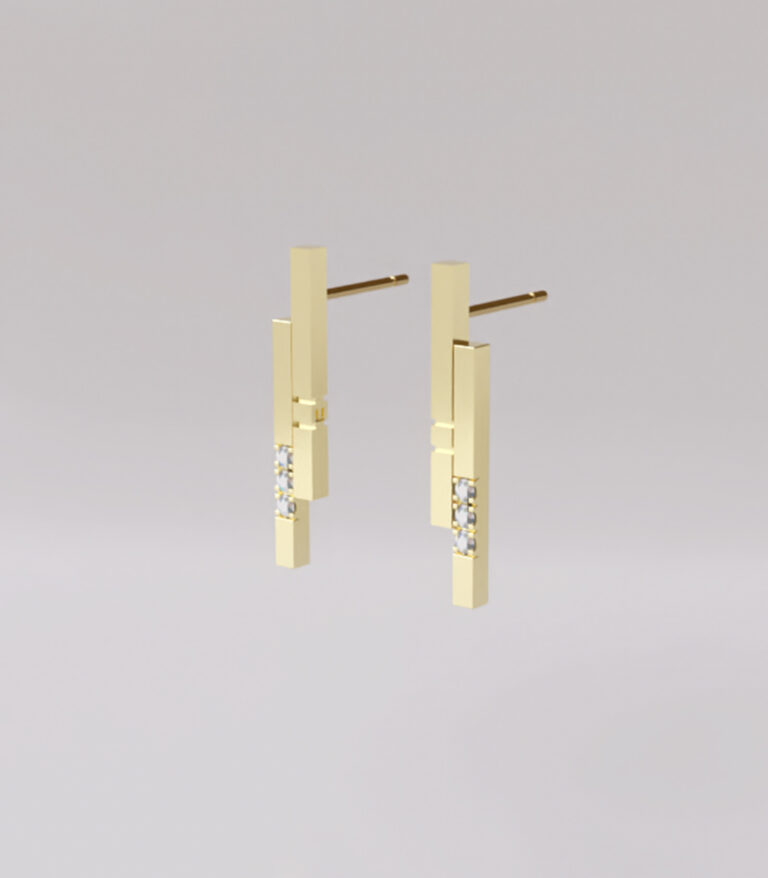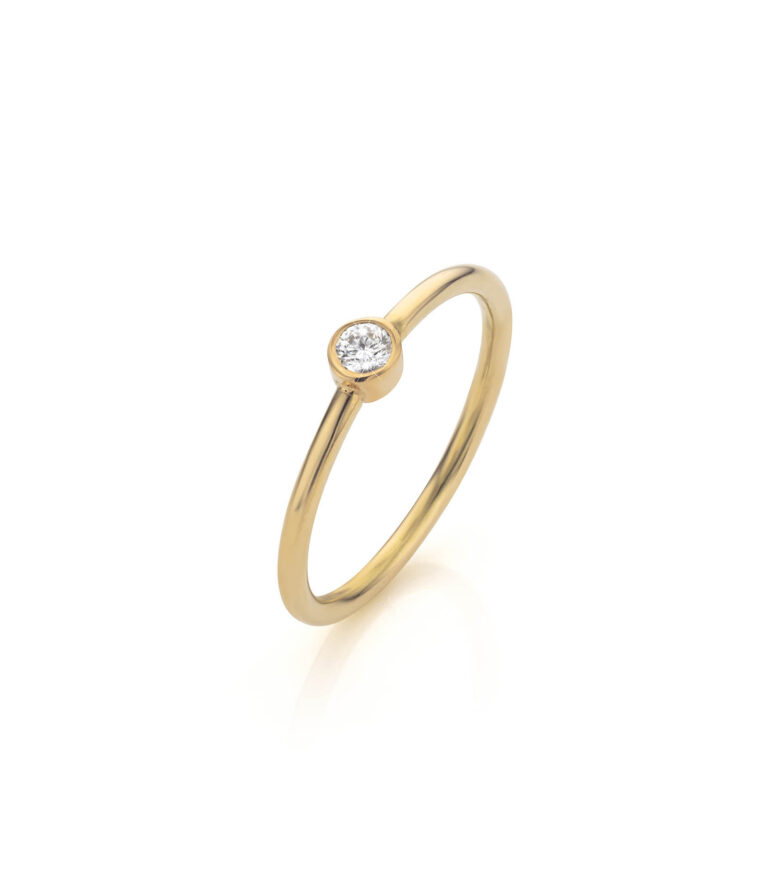EMBRACING SUSTAINABILITY
Lab-grown diamonds
The luxurious magnificence of gold and diamond jewellery is a recurring theme in KUBINI’s contemporary designs. However, we are aware that natural diamonds are not the most sustainable gemstones and that demand for jewellery from ethical and environmentally-friendly sources is rising. That’s why we’ve chosen to work primarily with lab-grown diamonds. The advantages?
- Real diamonds, the source is the only difference
- Environmentally friendly, ethical and 100% conflict-free
- More affordable and therefore accessible
- Visually identical to natural diamonds


Aiming for more sustainable jewellery
Lab-grown diamonds aren’t just beautiful to look at, they are also created in a ‘beautiful’ way. The diamond ‘grows’ from a bit of carbon that is subjected to high pressure and heat until it turns into a real diamond.
The most important benefit of this process is that it’s less harmful to the environment. That’s why we aim to promote jewellery with lab-grown diamonds and want to move towards their exclusive use. At this time, we leave the choice up to you. We still use natural diamonds for specific bespoke items if this is your preference or a certain cut isn’t possible with lab-grown stones.
Prefer natural diamonds? You may rest assured that they will be 100% conflict-free and from a reliable source. For diamonds of 0.030 ct or larger, you can even request a certificate from independent Antwerp institute HRD. Please note that such certification carries its own costs, which is why it isn’t available for diamonds under 0.030 ct. Your certificate would end up costing more than the actual diamond. Of course, whenever you buy jewellery from us, we also provide a receipt listing all your diamond’s specifications, regardless of the size or source.
QUALITY
Determining a diamond’s quality: the 4 Cs
Diamond jewellery is an investment. It’s clear that you’ll pay more for a larger stone. How exactly is a diamond’s value determined, though? Quality is generally measured based on the 4 Cs, a concept very familiar to jewellery designers.

CARAT
A diamond’s weight is measured in carats. 1 carat is equivalent to 200 mg. The higher the carat weight, the larger the diamond and the more valuable a piece of jewellery will be.
COLOUR
Every diamond is assigned a letter to indicate the colour, from D for entirely colourless to Z for light yellow. Purely colourless stones are considered the most exclusive. Diamonds in colours such as brown, red, green or blue are also very rare. KUBINI generally uses diamonds graded F or G. 3.
CLARITY
A diamond’s clarity also plays an important role in its value. Impure diamonds reflect less light, making them less ‘sparkly’. Naturally, a purer diamond will have a higher value than one with more inclusions or blemishes. We primarily work with diamonds graded VS or VVS, meaning there are no flaws visible to the naked eye.
CUT
The final contributing factor is the diamond’s cut. The more complex and detailed the cut, the more a diamond will sparkle and the higher its value will be.
Discover our jewellery
It starts
with hello
Want to learn more about our diamonds?
Would you like information about the price differences between jewellery made with lab-grown or natural diamonds?
We’d love to hear from you!




















